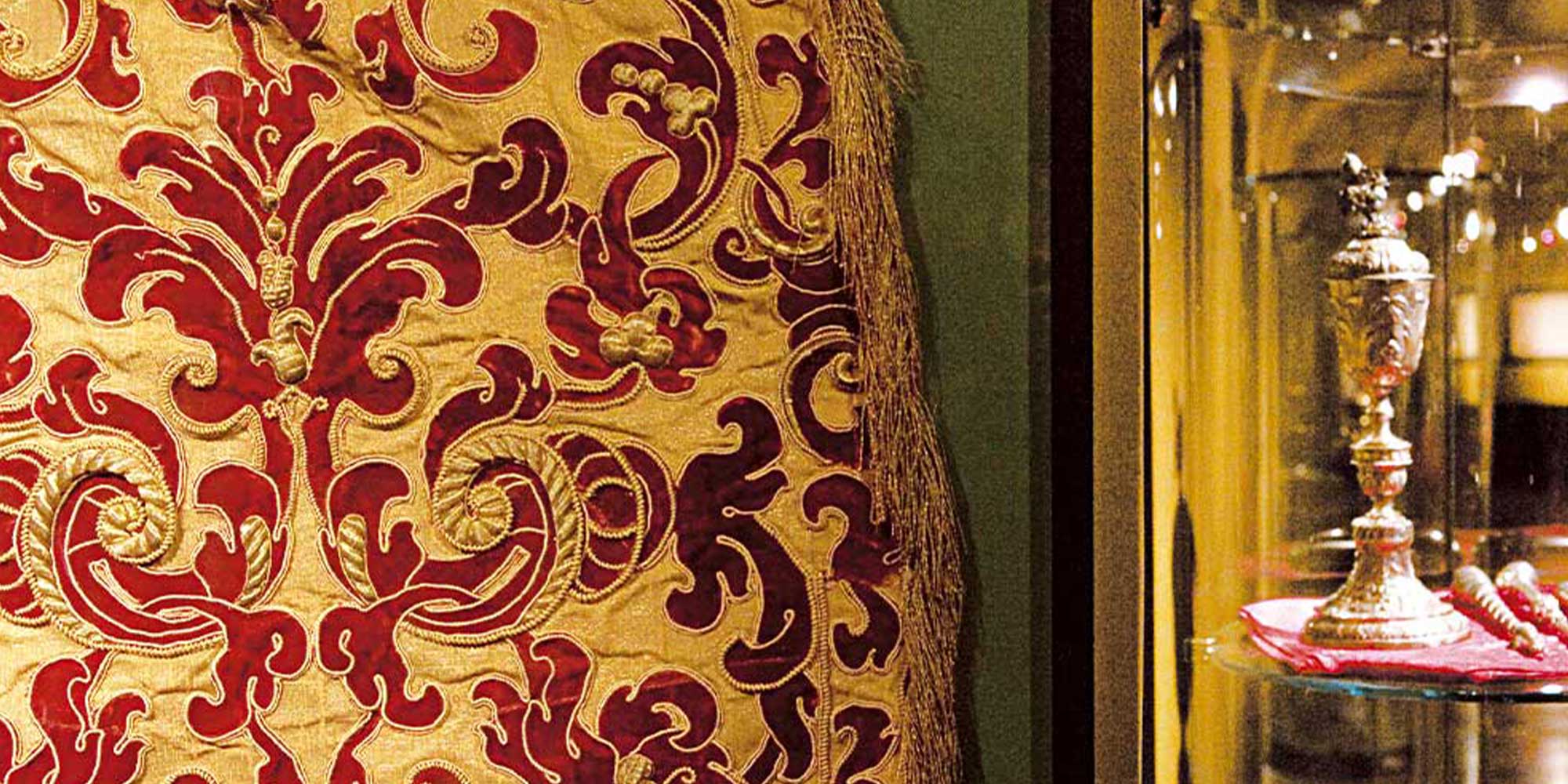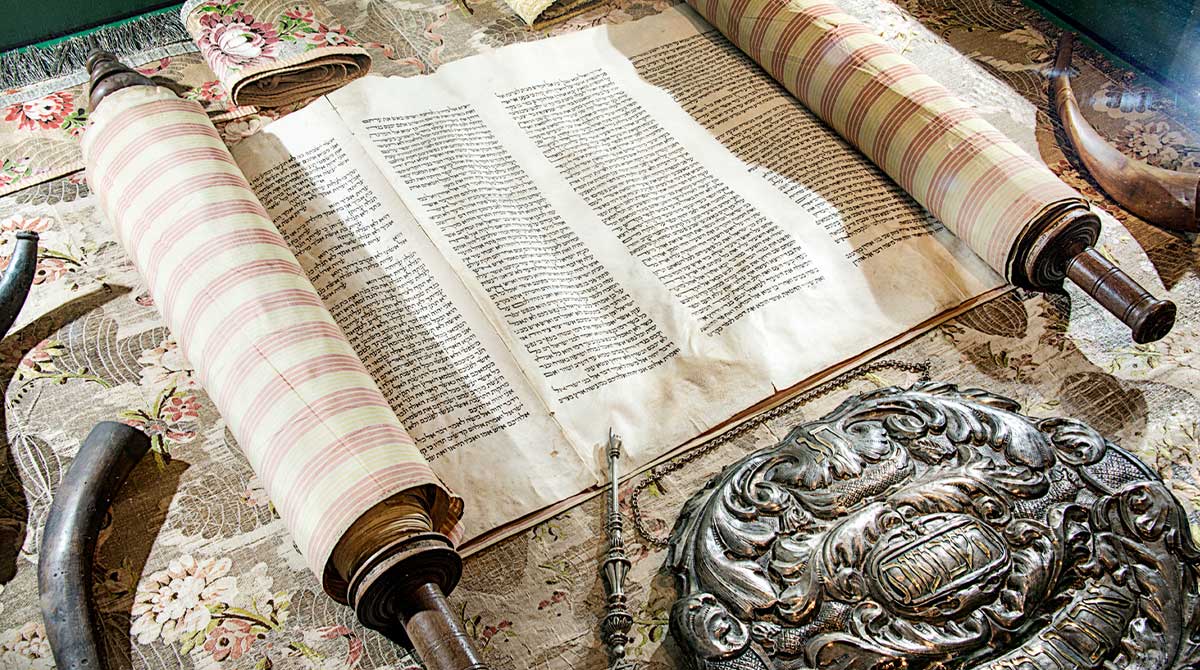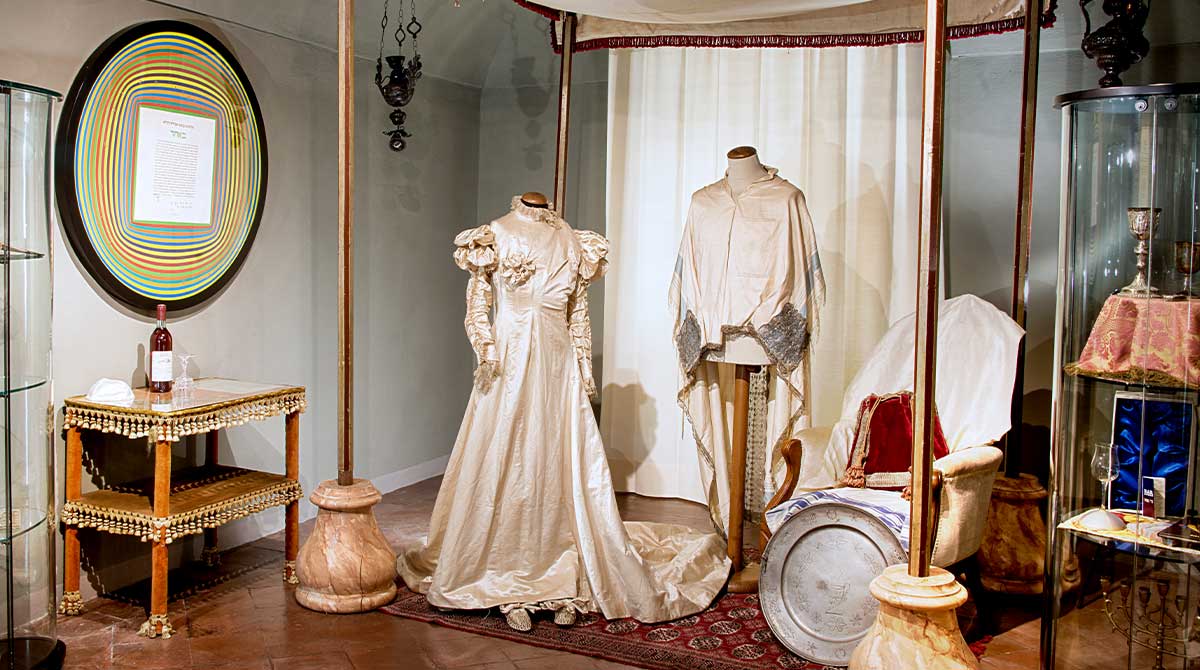An extraordinary collection of ceremonial objects
In the long corridor of the old Women’s Gallery on the first floor, you can admire the extraordinary collection of silver, a precious heritage of the Casale community. Most ceremonial objects used to decorate the Sefer, such as crowns (atarot) and finials (rimmonìm), were of exquisite Piedmont artistry and were made between the 17th and 19th centuries. These objects vary widely in taste and artistic characteristics. Still, they are often united by their depiction of recurring Jewish symbols (the Tablets of the Law, the Ark, the Menorah, the blessing hands of the Temple priest, etc.).
The textile collection is located in the short corridor of the Women’s Gallery, on the first floor. It comprises fine Piedmontese textiles made with special techniques, mainly silk embroidered with silver and gold thread lace. The textile collection is also primarily made up of ceremonial items. There are splendid examples of finely decorated and hand-embroidered parokhet and precious silk or linen sashes used to tighten the Sefer (mappah). The mantles (meil) date from the 17th century and, in addition to their aesthetic function, are used to wrap the scroll and protect it from dust.
Ceremonial objects have shapes and styles determined by their function and geographical origin. Interestingly, when Jews were forbidden access to the silversmith guild, ritual silver objects were made by non-Jewish craftsmen according to the requests and instructions of the patrons. Embroidery and textiles could instead be produced directly by Jews, without restrictions. These precious fabrics were mainly intended to complement, cover and embellish sacred objects used for religious purposes.
The works of ancient art that make up the collection are constantly increasing and come from loans from private individuals, generous donations and careful and meticulous purchases from antique dealers.





